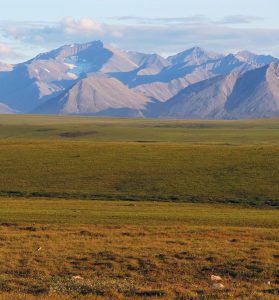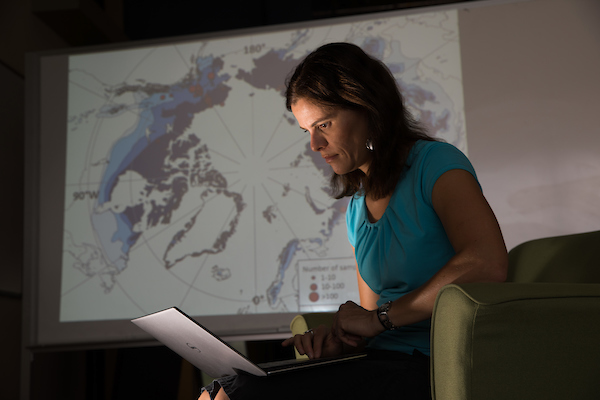By Kerry Bennett
Office of the Vice President for Research
Findings of a new study organized by the Permafrost Carbon Network (PCN) suggest that putting more effective greenhouse gas controls in place for the rest of this century could help mitigate the effects of climate change on the release of carbon from thawing soils of the northern permafrost region.
The paper, published in the Proceedings of the National Academy of Sciences, represents a collaboration between ecosystem scientists Ted Schuur and Christina Schädel of Northern Arizona University’s Center for Ecosystem Science and Society (Ecoss), who head the PCN, and lead author David McGuire, U.S. Geological Survey senior scientist and climate system modeling expert with the University of Alaska Fairbanks (UAF) Institute of Arctic Biology, along with a network of scientists from about two dozen other research institutions worldwide.
Researchers estimate there is almost twice as much carbon stored in the permafrost of high latitude ecosystems in the Arctic and Subarctic regions as is contained in the atmosphere. As global temperatures rise and the permafrost thaws, the frozen organic matter in the permafrost soil decomposes, releasing greenhouse gases like methane and carbon dioxide. The release of that carbon can, in turn, cause additional warming and the release of more carbon, something scientists call an “accelerating feedback loop.”
In the new study, the scientists used climate system models to simulate changes in permafrost and carbon storage in the northern permafrost region from 2010 to 2300, predicting the depth of permafrost thaw under a “lower greenhouse gas emission scenario” and a “higher greenhouse gas emission scenario.”
In the low emission scenario, if emissions were decreased by 75 percent by 2100, the study predicted an increase of carbon now stored in northern permafrost ecosystem, primarily because increased carbon stored in vegetation would offset soil carbon loss. In the high emission scenario, representing no change in current trends in the use of fossil fuels, the study predicted a loss of several hundred billion tons of carbon now stored in northern permafrost ecosystems into the atmosphere.

By better controlling greenhouse gas emissions through effective climate policy, scientists believe the consequences of carbon released from thawing soils of the northern permafrost region in the next 300 years could be substantially reduced, therefore decreasing the potential for a positive feedback of permafrost carbon release on climate warming.
NAU a partner in the SEARCH project
The PCN is part of the multi-million dollar Study of Environmental Arctic Change (SEARCH) project. The SEARCH project, headed by the University of Alaska Fairbanks as the lead institution and Northern Arizona University as one partner, is a system-scale, cross-disciplinary research program that seeks to connect the science of Arctic change to decision makers. The PCN has been successfully running since 2011 and includes more than 300 scientists from 88 research institutions in 17 countries.



